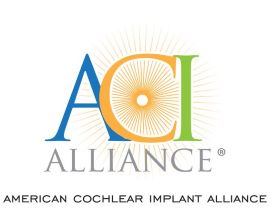
Cochlear Implants in the Classroom
Federal laws provide students with hearing loss the right to a free and appropriate public education (FAPE) up to the 12th grade. Even if your child’s hearing is improved by the use of a cochlear implant, these laws provide them access to accommodations and modifications within the classroom to help them succeed in school.
There are two primary laws that cover your child’s right to a FAPE.
- Individuals with Disability Education Improvement Act (IDEA)
- Section 504 of the Rehabilitation Act of 1973
IDEA provides for an individual education plan (IEP) for children that have been identified as having a disability. IDEA allows for additional services, accommodations, classroom modifications and other special education services for children with disabilities that are not offered to other children in order to help meet the unique needs of the child.
A 504 provides a plan for how a child will have equal access to learning within their school. A child does not need to qualify for special education services to receive accommodations and modifications within the classroom.
A child may have either an IEP or a 504 or both, although an IEP usually covers everything within a 504 plan.
Classroom Tips
- Classrooms are typically noisy, especially in elementary school. Make sure your child is seated away from visual and auditory distractions.
- Your child should be seated in the classroom where there is the best chance of hearing not only the instructor but also the students in the classroom. This may not always be front and center.
- Your child should sit away from noise – avoid the heating/AC systems and away from overhead vents, doors and windows (and asked that doors and windows be closed to decrease noise).
- FM systems or other assistive technology should be considered to further improve the speech to noise ratio in the classroom.
- Schedule a conference with your child’s teacher to discuss the extent of your child’s hearing loss and their use of a cochlear implant.
- Encourage the teacher to make sure that your child is paying attention before speaking.
- Maker sure the teacher knows that facing the classroom when speaking (i.e. don’t give instructions or examples while turning their back to the class to write on the whiteboard) provides important visual cues as well as improves speech understanding.
- Do use the board to write down new terms, vocabulary or directions to help your child keep up.
- Remind your child’s teacher that it will be harder for your child to follow along in a darkened room.
- Captioning or transcripts of video or audio presentations will help your child following along.
- Ask your teacher to consider a peer buddy system to assist in the class.
- Encourage your child’s teacher to be flexible in adapting their teaching strategies to meet your child’s communication needs.
- Meet other parents in your area or online who have been through this experience before and ask lots of questions. Use other family’s experiences to learn about opportunities for your child while keeping in mind that your child may perform differently within the classroom. Consider each suggestion and how it will work for your child’s individual needs.
As a parent, you are your child’s greatest advocate. Understanding the full extent of your child’s hearing loss and becoming knowledgeable about your child’s rights under educational laws will help you best advocate for your child.